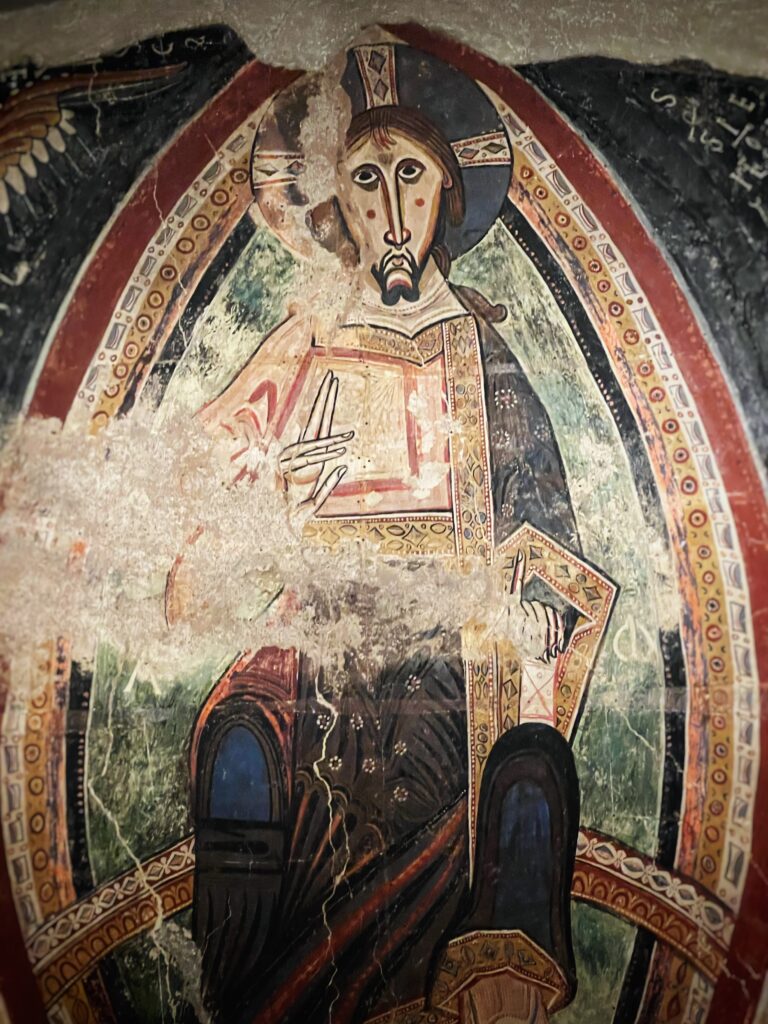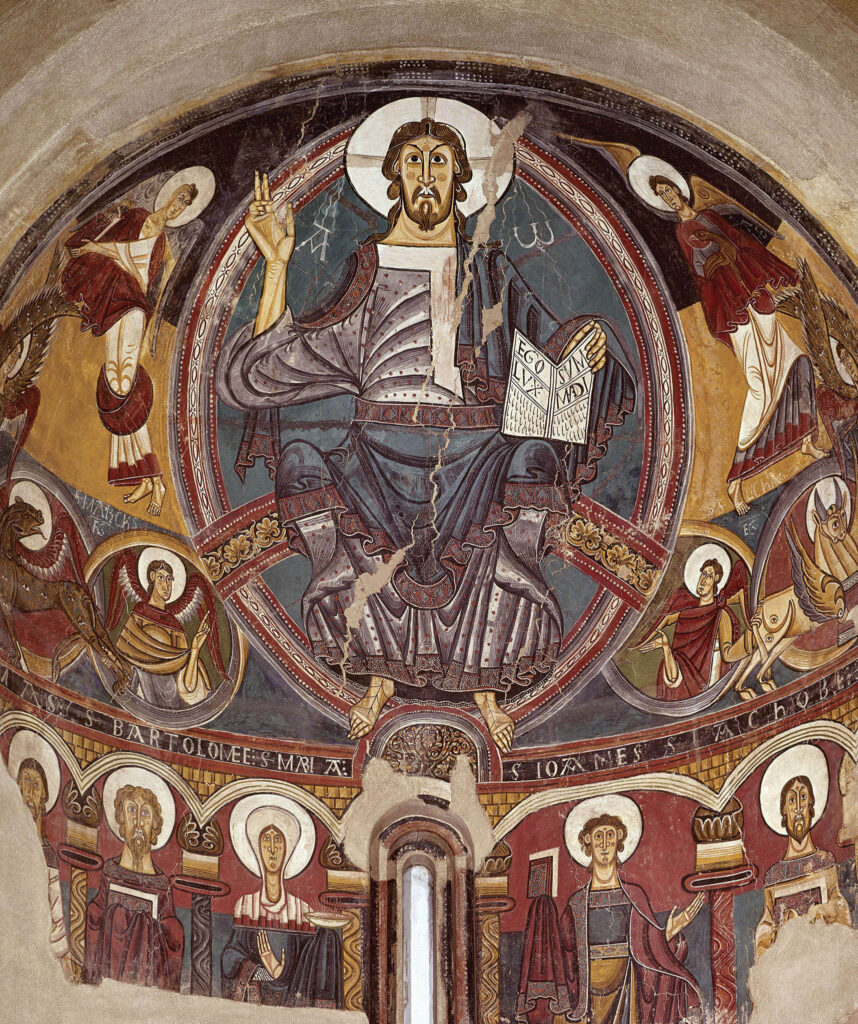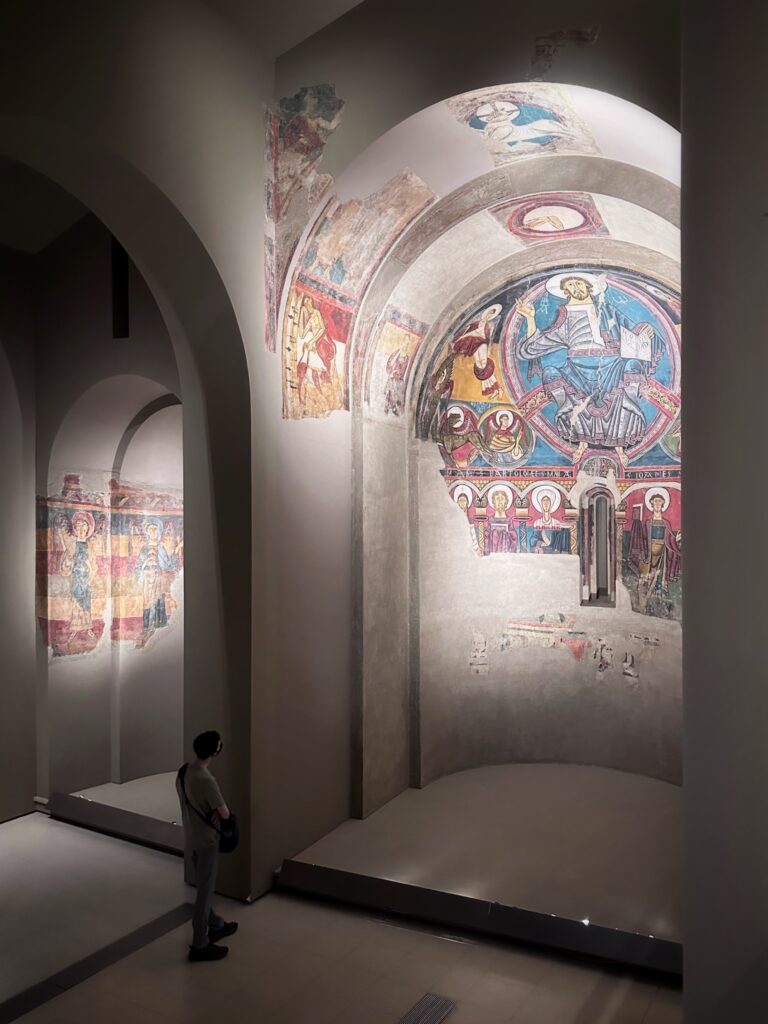Curation Done Right

Looking up, down, and all around, I saw so many frescos. Nestled up in the ceiling, set between two pillars, encapsulating a domed niche, they were practically everywhere, each waiting to be discovered. The still air in the vaulted rooms was cool and the crowd I had seen earlier amassing at the door to the museum was all but seemingly absent. They must have all gone to a different wing. Alone, I sat on a bench gazing up at the Christ in Majesty fresco from San Climent de Taull. Don’t worry if you haven’t heard about this work before. I will admit that all Romanesque frescoes kind of look the same. The size of the painting was astounding. Christ looks down on you with his ensemble of angels, spirits, and apostles, just like how Medieval Europeans believed he did from the heavens. To a pious pilgrim or devout priest of the time, the sense of awe this work conveys would surely arouse even the tiniest bit of devotion.

This is the Romanesque wing of the Museu Nacional d’Art de Catalunya. For the sake of my anglo-centric autocorrect, let’s just call it the MNAC for short. While I had previously seen other Romanesque displays in different museums throughout my recent trip to Europe, this one truly resonates in my head as an unseen celebrity of the museum world. This is really due to its meticulous, caring, and unique curation method. While I had observed ceiling frescos be displayed on ceilings, and wall frescoes on walls, I had not yet seen such a focus on the original geographical bearings of the paintings anywhere else. When I entered the dimly lit and brisk Romanesque wing, It honestly felt like a stony Medieval church nestled in the Catalaunian or Basque Pyrenees. Or should I say dozens of them. Throughout the gallery, there was a seemingly-random maze of pillars, corridors, walls, domes, and altar niches. These are all reconstructions of what the physical spaces of the paintings’ original locations resembled. Some more minor works were nestled in small half-dome niches while others, like the aforementioned Christ in Majesty, took up nearly an entire room.
Imagine the work involved in this curation process. For those who don’t know, frescos aren’t like regular paintings. The medium is applied through thin layers of paint applied directly to wet plaster. When the lime plaster dries, the paint is chemically fused to the wall. Somehow, in a scientific process which confounds me, restorers were able to extract the paint from the original churches and reapply it to the walls of the MNAC.
While this process is done quite regularly in the art conservation world, what really stands out with the MNAC is the care they took in preserving the physical spaces of these original frescos. The curators could have just stuck them on to a wall in a grid-like art gallery, but instead they chose to keep the original form and bearings of these masterpieces. When you sit down to appreciate the monumental collage above, you can easily imagine yourself as a weary traveler of the Medieval era seeking shelter from the hot sun in a small church nestled in the northern Spanish mountains. The museum has really allowed these frescos to continue life, both through transplanting them into a more stable environment and through respecting their previous centuries of existence.
While the glitz, glamor, and sometimes chaos of other museums, like the Prado, Louvre, or Uffizi, may be intoxicating, the MNAC is still one of the greatest museums I have ever seen. Their approach to conservation is meaningful, and the solitude I experienced in the gallery allowed me to connect further with the time, place, and meaning of the art. To anyone who may visit the MNAC, when you enter the lobby, turn left. You will not regret it!
